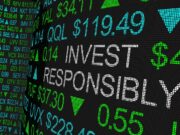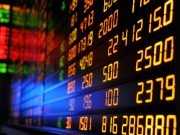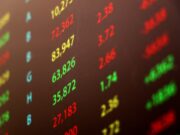“Buy American” has been good investment advice for quite a while now. But some international stocks are finally starting to show signs of life again.
U.S. equity markets have overwhelmingly outperformed the rest of the world for years. Over the last five years, the MSCI All Country Ex-U.S. Index has produced total returns of 11.05%. By comparison, the U.S.-focused S&P 500 has surged more than 69.5% over the same period.
Along the way, foreign stocks – namely emerging markets – have been a colossal value trap. While international markets have looked cheap by many valuation metrics relative to American stocks, they still manage to keep on getting cheaper.
That could be about to change – at least in one particular pocket of the ex-U.S. market.
To figure out what’s happening (and how to trade it) we’re turning to the chart for a technical look.
For starters, it’s important to bear in mind that while international stocks have been a quagmire for long-term investors, they’ve presented some tactical upside opportunities – especially in recent months.
We looked at a buyable opportunity in Brazil back in October 2018, when U.S. stocks were flagging. And again, at a broader group of emerging markets earlier this year. Both led to double-digit rallies in the short-run.
Now, a similar tactical play is shaping up in the iShares Core MSCI EAFE ETF IEFA, an exchange-traded fund that tracks stocks in Europe, Australasia, and the Far East.
IEFA has been in correction-mode lately, rolling over in early July and more recently consolidating sideways in a range just below $60. It’s that range that’s setting up the potential for a buy signal in this ETF right now.
IEFA is currently forming an inverse head-and-shoulders pattern, a bullish reversal setup that’s formed by a pair of swing lows that are separated by a deeper low. The buy signal comes on a breakout above the resistance level that identifies the top-side of the price range. For IEFA, that breakout level is currently right at $59.
That’s a significant level for another reason – it’s also the price level that defines the bottom of the uptrend that IEFA had been trading within for most of 2019. A breakout through that level also puts IEFA back in its uptrend, with plenty of upside room.
At a glance, IEFA’s price action looks particularly “gappy”. Those gaps are suspension gaps caused by off-hours trading on non-U.S. exchanges. They make IEFA look more volatile than it really is – but you can ignore them.
Finally, momentum, measured by 14-day RSI up at the top of IEFA’s price chart, adds some extra confidence to the potential for a reversal here – our momentum gauge managed to put in a higher low on each of the price swings in the pattern.
For IEFA, the buy signal comes on a meaningful breakout above $59. Wait for shares to catch a bid above that line in the sand before you jump into this trade. After that, it makes sense to keep a tight stop in place; if shares violate $57, then the pattern is broken and you don’t want to own it anymore.











